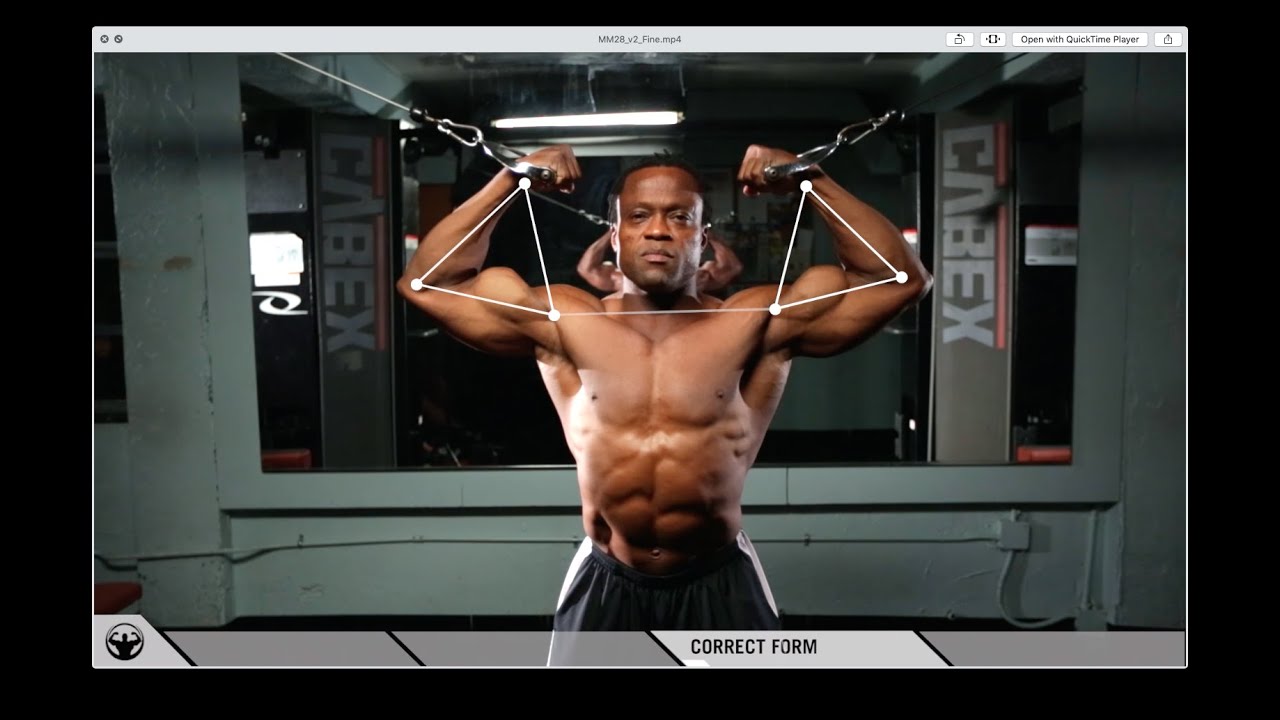Contents
The 5 best back exercises for a strong back

Among the best exercises to build your back, the cable pull-down is a staple. Whether performed standing or seated, this exercise builds your back muscles. Here’s how to do it. You can also try a bent-over one-arm cable pull down. If you’re unable to do this at home, you can visit your local gym for more assistance.
Lat pulldown
During a gym cable workout, one of the most effective exercises for building a stronger back is the lat pulldown. The lat pulldown targets the back musculature and emphasizes core stability. There are several variations of the lat pulldown, each with its own advantages and disadvantages. All of them are effective but should be used across several phases of training. Rotating these exercises throughout your workout will minimize muscular imbalances and help you identify your weak spots.
The lat pulldown is a common exercise for your gym cable workout. This exercise helps you build strength and muscle in your lats, but it is not as effective as pullups. Depending on the grip you use, you can target specific muscle groups on your back. To increase the effectiveness of the lat pulldown, use a neutral grip and squeeze your shoulders together. The key to a successful workout is to find a grip that allows you to perform the exercise with the correct form.
To start, set up a gym cable workout. The cable should be near one high pulley, preferably one at shoulder height. Use an overhand grip on the lat bar and attach it to the cable machine with the bar grip. Then, slowly pull the bar to the collar bone. You should hold the bar just below your chin. As with any workout routine, you should always hold the bar securely and slowly. Pulling the cable too quickly will put undue stress on the shoulder joint.
You can also combine the reverse-grip lat pulldown with a wide-grip one. The reverse grip lat pulldown uses the lower lats and requires a different grip. While this exercise is effective for building a strong back, it is not an ideal choice for beginners. You can also substitute the standing variety with a barbell bent-over row to build your back muscles.
Straight arm rope pull down
A straight arm rope pull down for a stronger back works the lats in two ways. First, it helps strengthen the lat muscles through a greater mind-muscle connection, which means that the exercise is easier to perform. Second, it trains the lats in two different ways, including shoulder extension and flexion. You can use a resistance band or a high anchor to perform this exercise.
The lats make up the majority of your back. When your lats are stronger, they will look bigger and your back will look larger. The lats will be more visible when you are wearing a shirt, as more muscles stick out. Regular lat isolation training will help you lift heavier weights during other back exercises. The straight arm pulldown will give you that shield-like back that you’ve always wanted.
To perform a straight arm rope pulldown, you’ll need a cable pulley or bar. A rope will allow for the most range of motion, but a bar will do as well. In addition, a rope allows you to use a wider grip, which will enhance lat activation. If you don’t have a cable pulley, you can use a resistance band.
In addition to a rope, you can perform a straight arm pulldown exercise with a stirrup handle. Using a stirrup handle will give you the added benefit of strengthening the opposite side of your body. If you’re aiming to strengthen your back, you can also try a resistance band pulldown. This type of exercise allows you to do more reps while lessening the stress on your joints. Using the neutral grip is the strongest and easiest on the shoulders and elbows.
X-row
An X-row cable workout can be performed with a bench, an EZ-bar attachment, or a rope. You should use proper form when performing this exercise because you will be pulling with only one arm. Compared to a barbell row, this exercise works the back more effectively because it engages all of the muscle groups, including the core and the stabilizing muscles. In addition, it helps to develop bilateral strength because it isolates the back muscles and allows for deep stretching.
The X-row is an excellent back exercise because it targets the entire back and strengthens the rotator cuff. This workout also helps to correct muscle imbalances in the back and prevent shoulder injuries. It can also be done on a cable machine for added safety. For an intense back workout, you should aim to do at least three sets of five to 10 reps of each movement.
Another effective exercise is the cable row, which targets the muscles in the back and shoulders. This exercise is versatile, and you can attach different handles to the cable so that you get the most benefit out of it. For example, you can use the overhand grip or the underhand grip to recruit more muscles. Additionally, you can vary the grip width to target specific muscle groups. This exercise is especially beneficial for those who have a history of back problems, as it will help them develop strong, efficient back muscles.
Once you have mastered the basics of the X-row gym cable workout, you can move on to the next level. The best way to achieve an optimal back workout is to start with a lightweight and work your way up to a higher weight over time. The higher the weight, the more effective your workout will be. You should aim for three sets of eight to 10 reps per exercise.
Unassisted pullup
Unassisted pull-ups with gym cables are the ultimate back strength exercise. This advanced exercise requires full shoulder flexion and extension to ensure optimal activation. Whether performing them at home or working in a gym, they are an excellent way to build a stronger back. However, this exercise may not be appropriate for everyone. People who are not strong enough to perform a pull-up should focus on other back exercises instead.
The main key to a strong back in an unassisted pull-up is to maintain a stable grip and relaxed shoulders. While holding the pull-up bar, your arms should be slightly wider than your shoulder width and your palms should be facing forward. When holding the bar, let your legs dangle below your chest. Once you have mastered this technique, you can increase your resistance by using a weighted pull-up bar.
If you want to add some difficulty to your workout, you can also do band-assisted pull-ups. You can either use an overhand grip or a chin-up grip. As with any pull-up exercise, you should start at the bottom hang position with your foot in the band. Ensure your shoulders are low but don’t touch your ears. Take 2-4 seconds to lower yourself. Pause for two to three seconds before starting the next pull-up. Repeat for the prescribed reps.
Before beginning a pull-up workout, test your own ability to perform bodyweight pull-ups. This will determine the type of exercises to do for your back. To begin, try to find a bar that you can hang on to, and then try bodyweight pull-ups until you can safely perform them. When you reach a level of proficiency, try performing them without a bar.
Kneeling cable high row
If you’re looking for a way to strengthen your back and achieve better posture, you might want to consider the high cable row. The high row machine works the upper back from an angle that is not possible to achieve with free weights. This type of exercise is great for the entire back and works the lats and rhomboids, two key muscles for good posture. To perform this exercise properly, you should anchor the cable high above your head. Ensure that your feet remain flat on the floor, and perform three sets of 12 reps.
A kneeling cable high row is an excellent way to build a stronger back because it uses multiple handles instead of just one. Single handles, straight bars, and ropes are all effective alternatives to the single-arm cable row. Kneeling cable high row exercises do not require heavy loads. They are ideal for strengthening the back and are best suited for muscle hypertrophy. In contrast, a standing machine high row forces the user to stand while performing the exercise and pulls the weight downward toward the torso. These exercises are best for the lower back, but also can help improve posture.
High rows are not recommended for beginners. Machines are designed to work out the upper and lower back, so high rows are not appropriate for everyone. Instead, they’re best for people who want a big, thick back. Kneeling cable high row is an effective way to strengthen your back and get a great workout at home. The machine’s padded front rest helps keep your body in the right position.
https://youtu.be/JZequ2J7wU0
Did you know?
As far as specific chest exercises go, there are a few that are particularly effective for beginners. Push-ups are a great way to start strengthening your muscles. If you can’t do a traditional push-up, try doing them on your knees. Additionally, dumbbell flies are a great way to target muscles. Start by lying on a bench or stability ball with a light weight in each hand. From there, slowly raise the weights up above your chest and then back down again. Remember to keep good form throughout the entire exercise – no arching your back or flaring your elbows!
Music can help to distract you from the fatigue and pain you may be feeling during your workout. Instead of focusing on how tired you are, you can let the music transport you to another place. Second, music can help to increase your motivation and focus. When you’re feeling low on energy, a pump-up song can give you the boost you need to keep going. And finally, music can provide a much-needed sense of rhythm and tempo. This can be especially helpful when you’re doing repetitive exercises like running or cycling. So next time you hit the gym, don’t forget to bring along your tunes!





